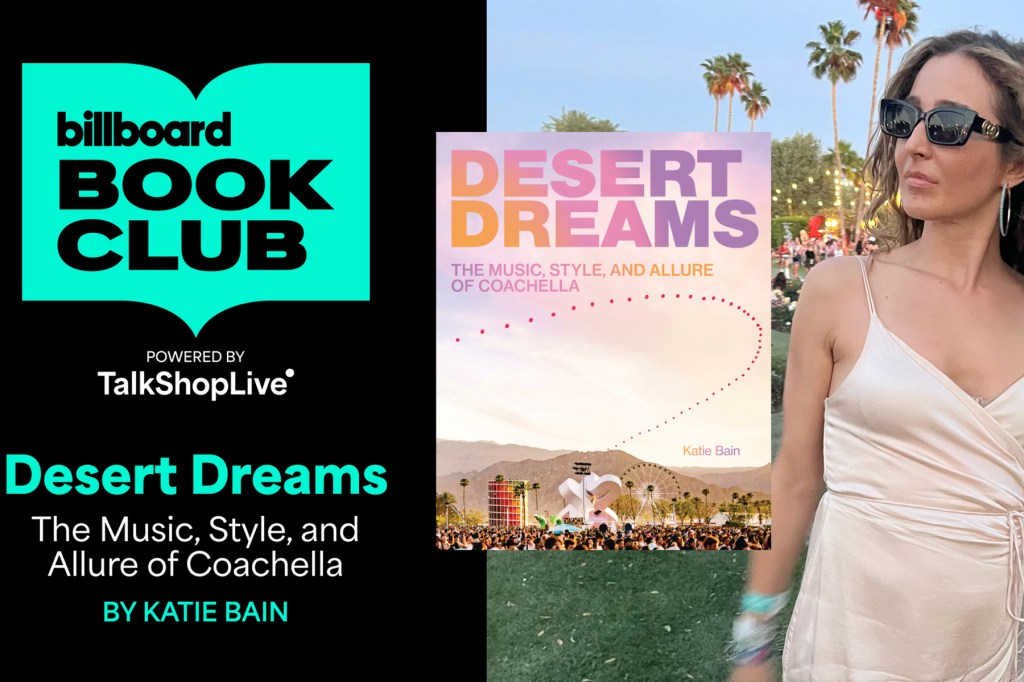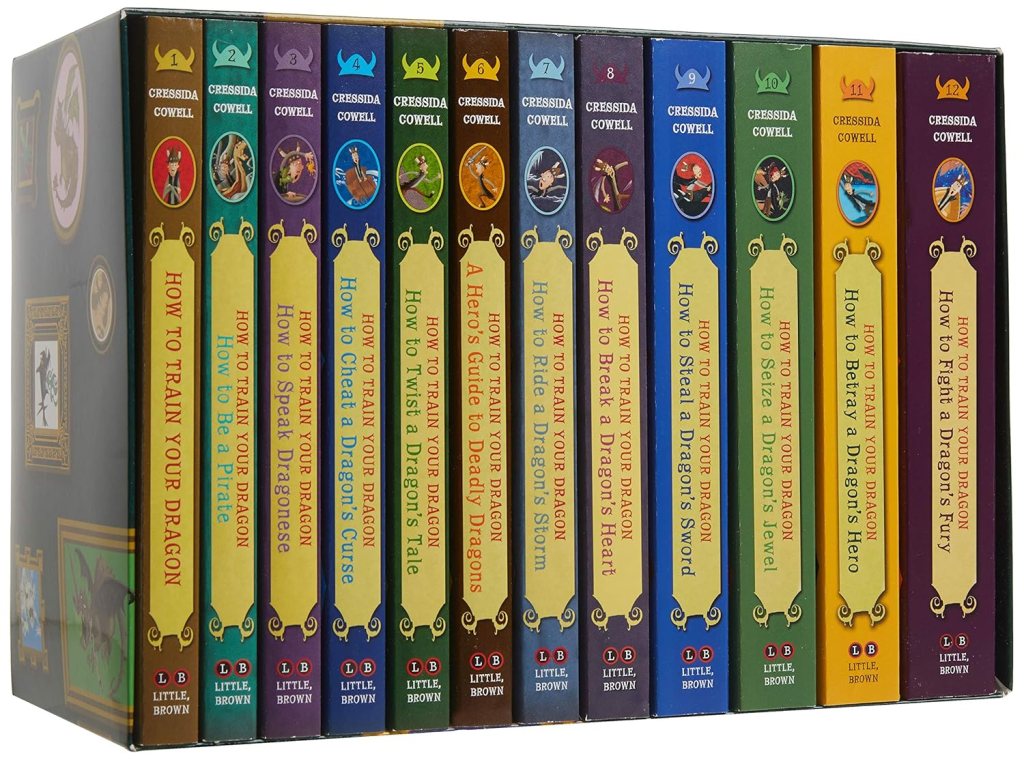books
Trending on Billboard
Uketsu’s horror-mystery novel Strange Pictures has been shortlisted for Waterstones’ 2025 Book of the Year.
Originally published by Futabasha in 2022, Strange Pictures is an interactive horror-mystery in which readers unravel the story through clues scattered across “nine bizarre paintings” that feel subtly off. Since its release, the novel has garnered a broad following, selling over 1.2 million copies in Japan and surpassing 2 million copies worldwide.
Waterstones, the U.K.’s largest bookstore chain with nearly 300 locations across the U.K. and Ireland, selects its annual Book of the Year based on titles that booksellers most want to recommend to readers. The award draws significant attention in the U.K. publishing scene and is also widely followed by general readers. The chain described Uketsu’s work as “a horror novel by a Japanese author originating on social media, gaining attention even in the English-speaking world — an unconventional pick.”
Explore
See latest videos, charts and news
The novel has also been recognized internationally: In France, it was named FNAC’s Book of the Month, while in Germany it topped the May 2025 Krimibestenliste — Deutschlandfunk and Deutschlandfunk Kultur’s mystery list — as the best crime novel of the month. In Thailand, it debuted at number one in a major book event shortly after its release, and translation rights have now been secured in 36 countries and regions across five continents, including the U.S., South Korea, China, Brazil, and Morocco.
The enigmatic, masked writer and YouTuber’s latest installment in the “Strange” series called Strange Maps is currently available in Japan, and recently claimed the top spot on Billboard Japan’s new book chart, the Japan Book Hot 100. See Uketsu’s reaction to being nominated in the U.K. in full below.
I’m deeply honored and truly grateful. I lived in Surrey, England, as a child. The overcast skies, the scent of rain, and the serene yet slightly uncanny culture were formative experiences for my writing. I’m thrilled to reconnect with readers in the U.K. in this way.
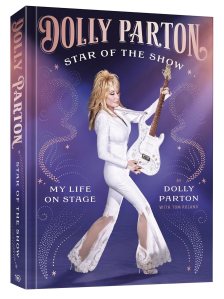
Trending on Billboard
Whatever has been ailing Dolly Parton is nothing that a bestselling book can’t fix. The superstar, dressed in a black leather top and pants adorned with glittery silver and gold stars, was out and about this week touting her new book, Star of the Show: My Life on Stage.
Parton made the rounds in Nashville following the book’s Tuesday release, posting on Instagram her stops at Barnes & Noble, Sam’s Club, Walmart, Costco and Target, where she was making sure her newest release was front and center. She even tried some tasty treats at Costco, and then at Target jokingly used the book as a weight, hoisting it up in the air a few times, jokingly declaring, “This is heavy. This is how I built up my chest.”
Written with Billboard Country Update editor Tom Roland, the book celebrates Parton’s nearly 60-year career as an entertainer. It is the third in a trilogy, following Songteller, which focused on her lyrics, and Behind the Seams, which highlighted her fashion. Star of the Show features more than 500 photos, stories about her decades of touring and a list of all her performances.
Parton made news in September when she postponed her December dates at The Colosseum at Caesars Palace in Las Vegas to September 2026, telling fans, “As many of you know, I have been dealing with some health challenges, and my doctors tell me that I must have a few procedures. As I joked with them, it must be time for my 100,000-mile check-up, although it’s not the usual trip to see my plastic surgeon!”
Concern for Parton hit overdrive in October after her sister Freida posted on social media that she had been “up all night praying for my sister, Dolly,” adding “Godspeed, my sissy Dolly.” The next day Parton posted a video suggesting her health issues were of no great import. “I know lately, everybody thinks that I am sicker than I am … do I look sick to you?! I’m workin’ hard here,” she said, dressed to the nines in a red top and black pants. She stressed she wanted to put “everyone’s mind at ease… I’m OK. I’ve got some problems that I mentioned,” adding that she didn’t take care of herself while she was tending to her sick husband, Carl, who died in March. She added she was having “a few treatments here and there” at Vanderbilt’s Medical Center but stressed “I am okay…. I don’t think God is through with me and I ain’t done working.”
This Sunday, Parton will receive the Jean Hersholt Humanitarian Award at the Oscars’ annual Governors Awards in Los Angeles. The award is given “to an individual in the motion picture arts and sciences whose humanitarian efforts have brought credit to the industry by promoting human welfare and contributing to rectifying inequities,” according to the the Academy of Motion Picture Arts and Sciences.
The award recognizes Parton for her decades-long humanitarian efforts, including the Dollywood Foundation, which inspires the children of East Tennessee — her home state — to achieve educational success, as well as her Imagination Library, which provides pre-school children with a book a month.
Trending on Billboard Billboard senior music correspondent Katie Bain is bringing her just-released book Desert Dreams: The Music, Style, and Allure of Coachella to a Billboard Book Club livestream today (Oct. 27). [talkshoplive modus=”rqqZwi_OmY-7″ data-auto-play=’1′] In the new book — which arrived last week, on Oct. 21 — Bain explores the history and influence of Coachella, […]

Trending on Billboard
Country fans are getting an early look at Lainey Wilson‘s role in the upcoming film adaptation of Colleen Hoover’s Reminders of Him courtesy of a trailer released Tuesday (Oct. 21).
The movie — due in theaters March 13 — follows protagonist Kenna Rowan (played by Maika Monroe), who makes a mistake that sends her to prison. After seven years, she returns to her hometown in Wyoming, seeking to reunite with her young daughter Diem. After Diem’s custodial grandparents deny Kenna the opportunity to reconnect with Diem, Kenna forms a connection with a local bar own named Ledger Ward (played by Tyriq Withers).
Wilson, who is one of the leading nominees at November’s CMA Awards, portrays the role of Kenna’s friend and coworker, Amy. In the trailer, Wilson’s character is seen speaking with Kenna.
“What’s your trauma?” Wilson’s character Amy says during a brief scene.
Kenna replies that she just got out of prison and is struggling to find work.
“Sh–, you win,” Wilson replies.
The film is an adaptation of Hoover’s 2022 book Reminders of Him, which sold more than 6 million copies in the United States; Colleen Hoover also wrote the bestselling book It Ends With Us, which was turned into a movie starring Blake Lively last year. The Reminders of Him cast also includes Lauren Graham and Bradley Whitford as Diem’s grandparents Grace and Patrick, while Rudy Pankow portrays Diem’s father Scotty. The supporting cast includes Jennifer Robertson playing Kenna’s landlord Ruth, while Zoe Kosovic portrays Kenna’s daughter.
The role in Reminders of Him will mark Wilson’s feature film debut, though she has previously had a recurring role on the television show Yellowstone.
Wilson just released a new EP, titled Peace, Love & Cowboys (Holiday Edition), on Oct. 17. After co-hosting last year’s CMA Awards with Peyton Manning and Luke Bryan, Wilson will solo host this year’s show for the first time. She is also on her headlining Whirlwind World Tour, which has included sold-out shows at New York’s Madison Square Garden and Nashville’s Bridgestone Arena.
See the trailer for Reminders of Him below:
All products and services featured are independently chosen by editors. However, Billboard may receive a commission on orders placed through its retail links, and the retailer may receive certain auditable data for accounting purposes.
With the success of the live-action How to Train Your Dragon remake (2025), new fans are discovering the magic and excitement of the Isle of Berk that’s captured in the new movie’s source materials.
Explore
Explore
See latest videos, charts and news
See latest videos, charts and news
How to Train Your Dragon was based on an animated movie trilogy, which started in 2010, as well as a 12-book young adult series that began in 2003.
And right now, you can pick up the book series set in paperback for $108 on Amazon — $9 per book.
In addition, How to Train Your Dragon books are available as an Audible audiobook, which is only 99 cents for three months for subscribers only.
If you’re not a subscriber, you can sign up for a 30-day free trial. But right now, Audible has a new promotion, which gives new subscribers three months of service for just 99 cents per month for three months. You’ll receive one credit for any audiobook on Audible. But act fast and sign up now, this deal ends on July 31.
‘How to Train Your Dragon: The Complete Series’
You can also get the three-movie collection on Blu-ray on sale for $12.91 (regularly $29.98), a nearly 60% savings.
If you’re an Amazon Prime member, you can order now and the How To Train Your Dragon book or Blu-ray set will be delivered to your home in less than two days once it’s released, thanks to Prime Delivery.
‘How to Train Your Dragon: 3-Movie Collection’
$12.91
$29.98
57% off
Not a member? Sign up for a 30-day free trial to take advantage of all that Amazon Prime has to offer, including access to Prime Video, Prime Gaming and Amazon Photos; fast free shipping in less than two days with Prime Delivery; in-store discounts at Whole Foods Market; access to exclusive shopping events — such as Prime Day and Black Friday — and much more. Learn more about Amazon Prime and its benefits here.
How to Train Your Dragon (2025) — which music by film composer John Powell, who also created the music for the original movie — is in theater right now, while the entire book series is ready to buy for $108 on Amazon, while the three-movie Blu-ray set of the animated films is on sale for $12.91 (reg. $29.98) from the retail giant.
Want more? For more product recommendations, check out our roundups of the best Xbox deals, studio headphones and Nintendo Switch accessories.
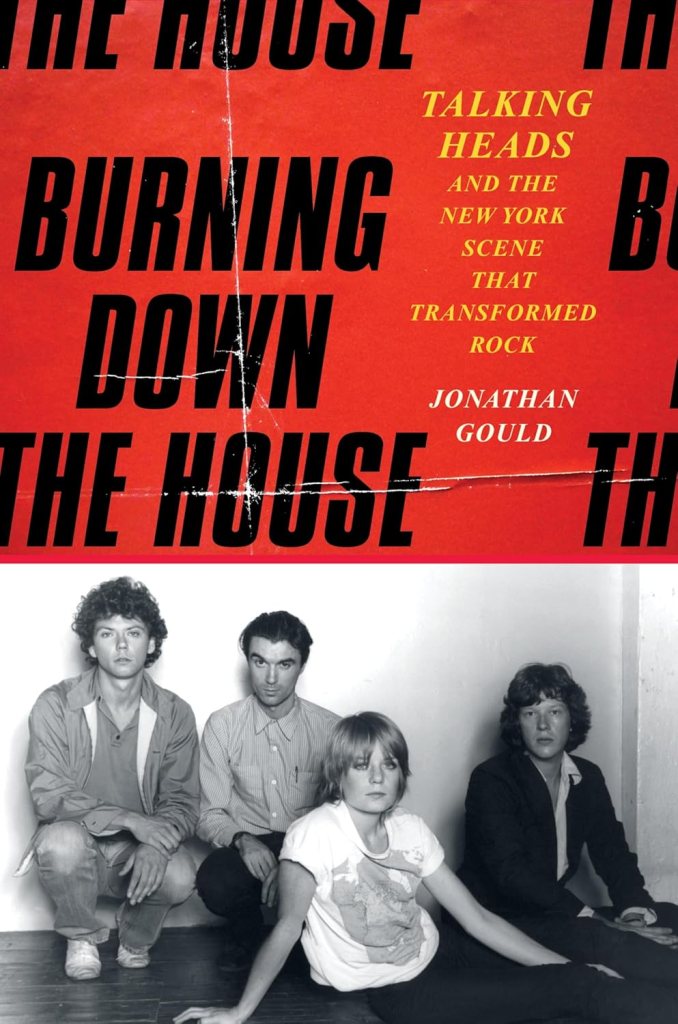
All products and services featured are independently chosen by editors. However, Billboard may receive a commission on orders placed through its retail links, and the retailer may receive certain auditable data for accounting purposes.
With hits like “Psycho Killer,” “Wild Wild Life” and “This Must Be the Place,” talking Heads have been creating iconic cultural moments for more than 50 years. Now, music historian and author Jonathan Gould has a new book biography.
Explore
Explore
See latest videos, charts and news
See latest videos, charts and news
On sale for $32 (reg. $39) on Amazon, Burning Down the House: Talking Heads and the New York Scene That Transformed Rock chronicles the band’s early days during the ’70s and how their music changed modern rock’s sound and look for the New York City punk scene to mainstream pop culture.
If you’re an Amazon Prime member, you can order now and Burning Down the House will be delivered to your home in less than two days once it’s released, thanks to Prime Delivery.
Not a member? Sign up for a 30-day free trial to take advantage of all that Amazon Prime has to offer, including access to Prime Video, Prime Gaming and Amazon Photos; fast free shipping in less than two days with Prime Delivery; in-store discounts at Whole Foods Market; access to exclusive shopping events — such as Prime Day and Black Friday — and much more. Learn more about Amazon Prime and its benefits here.
The biography is also available at BookShop.org for $32.55 (reg. $35), while Burning Down the House is buyable at Barnes & Noble priced at $35.
Mariner Books
‘Burning Down the House’
$32
$35
9% off
In addition, Burning Down the House is available as an Audible audiobook, which is only $0.99 for three months for subscribers only.
If you’re not a subscriber, you can sign up for a 30-day free trial. But right now, Audible has a new promotion, which gives new subscribers three months of service for just $0.99 per month for three months. You’ll receive one credit for any audiobook on Audible, including Burning Down the House. But act fast and sign up now, this deal ends on July 31.
Want more? For more product recommendations, check out our roundups of the best Xbox deals, studio headphones and Nintendo Switch accessories.
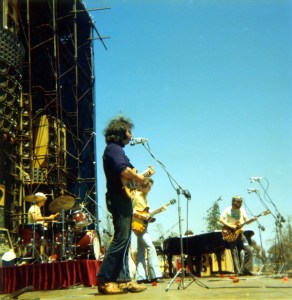
This August, Dead & Company will celebrate 60 years of Grateful Dead music with three massive concerts in San Francisco’s Golden Gate Park. Fans can reasonably assume – as they can with most major touring artists today – that the sound will be impeccable.
But six decades ago, when the Grateful Dead began gigging around that very same park, quality sound was far from a given. Audiences routinely endured terrible audio, and bands also struggled to parse the noise and play together. Modern cornerstones of concert production, from monitors to digital delay towers, had yet to be invented.
The Grateful Dead didn’t just embrace new advancements in audio technology – as journalist and Deadhead Brian Anderson chronicles in his new book, Loud and Clear: The Grateful Dead’s Wall of Sound and the Quest for Audio Perfection, the revered band actively drove concert sound forward, creating many of today’s standards in the process.
Trending on Billboard
Loud and Clear specifically tackles the first decade of the band’s history, from its Bay Area formation in 1965 to the Wall of Sound, the gargantuan sound system worth nearly $2 million in today’s dollars that it took on the road in 1974. During those years, the band and the cast of characters in its orbit – from an audiophile LSD chemist to hard-nosed roadies – continually iterated its sound system, introducing numerous innovations in service of creating a deeper performer-listener connection through quality sound. The pinnacle was the Wall of Sound, a technological marvel that towered behind the band and allowed each musician to manipulate their individual mixes in real time.
“I knew this was for a general audience,” says Anderson, who asked himself, “How do I make it digestible and explain this stuff in a way people are gonna understand?” The son of Deadheads – who saw the band repeatedly in this era and took him as a toddler to see the Dead at Alpine Valley in the late ‘80s – found the answer in those strong personalities within the Dead’s organization. Loud and Clear is as much a story about the Dead’s audio equipment as it is about the band’s musical philosophy and the way money, fame, and excess challenged it.
“The wheels came very close to coming off,” Anderson says of the Dead in this era. The band took the Wall of Sound – which, when its almost 600 speakers were assembled, measured 60 feet long and more than three stories tall – on the road for nearly 40 shows in 1974, and the unprecedented production feat came close to bankrupting the Dead and tearing it apart. Plus, at a time with far fewer regulations, transporting, assembling, and disassembling the Wall came with plenty of risks for the (often inebriated) crew tasked with doing so; Loud and Clear’s at-times harrowing narrative includes broken arms, nearly-severed toes, falling equipment, electrocutions and flipped trucks. “It’s amazing that nobody bit it,” Anderson says.
The Dead ultimately carried many of the lessons of the Wall of Sound into the proceeding years – but after taking a hiatus in 1975, returned without the advanced system in 1976. “They somehow kept it together,” Anderson says, “but there was a collective sigh of relief at the end of 1974 when they’re like, ‘OK, you know what? Let’s take a break here.’”
The Grateful Dead (L to R: Bill Kreutzmann, Jerry Garcia, Bob Weir, Phil Lesh) perform on May 25, 1974 at Santa Barbara Stadium in Santa Barbara, California with their Wall of Sound.
Ed Perlstein/Redferns/Getty Images
What inspired you to write a book not just about the Dead, but about such a specific topic and period?
I am the child of early Deadheads who both started seeing the band in the late ’60s and early ’70s in Chicago and the tri-state area. I grew up hearing them talk about the Wall of Sound and this system’s sonic clarity. They would talk about seeing the band perform with this massive assembly of gear behind them – and it’s called the Wall of Sound, so it’s just captivated me my entire life.
As time went on, I grew to appreciate the scale of the Wall. When I was at VICE, I was the Features Editor [at science and tech vertical Motherboard], and I thought it would be cool to do a deep dive into the Wall of Sound. I embarked on writing that initial story because I knew that it had more than just the technology component – it’s a story about obsession, obsessive people who came from all walks of life. After that story came out, it quickly dawned on me that there’s so much more here – like, maybe I could do a full book on this one day.
How did the Dead’s pursuit of quality sound differentiate themselves from their peers and ultimately help them amass the following that they did?
Not long after the band had gotten going, [singer/guitarist] Jerry Garcia’s mother, Ruth, purchased her son a pair of Klipsch speakers. That was, basically, the very first iteration of the Dead’s sound system. No other bands at the time had their own rig like that, so immediately, they were elevated above most of their peers, at a time when musical PAs didn’t exist. Most any club that they were playing at the time, if it did have a sound system, it was just a small little box to like each side of the stage. The famous example, on a bigger level, is the Beatles at Shea Stadium. Live sound presentation in the mid ’60s was kind of terrible.
Then they get hooked up with Owsley Stanley, who was their patron and their original sound man. He was using money that he was making from manufacturing LSD to bankroll the band. He was kitting them out with top-flight gear by early 1966 – and right around that time, the acid tests were getting going. The Dead were basically the in-house band at the acid tests, and the acid tests would be the model that they would follow, really, through the end of their career: During the acid tests, the band and the crowd were all the same organism, everyone was in the same sonic envelope.
The whole point of putting [all the audio equipment] at the musicians’ backs [in the Wall of Sound in 1974] was to ensure that the band and the crowd would all hear the same thing and be in the same sonic envelope together – and that harkened right back to the acid tests. There’s also an ethic with the Dead that was there from the very early days: That ethic was to present the sound in such a way that the person in the very back row would experience the exact same thing as someone who was hanging right on the barrier. Part of their righteous approach to sound was to present the sound in such a way that everyone in the space together [would] experience the same high quality.
At its roots, the Dead almost had a punk-like, DIY ethos. What tensions did that introduce as the band’s operation grew and professionalized?
By the early ’70s, the sound system that was growing into the Wall of Sound had become the center of the Dead’s homegrown world-building project, which included their own record label, in-house travel and booking agencies, a publishing arm, and a whole cottage industry of boutique sound and audio companies that were building kit for the Dead. [The Dead wanted] to do everything their own way; it didn’t necessarily make sense to do what they were doing, but they did it anyway. It was super, super punk, super DIY.
From the very beginning, they would always funnel money back into their sound system – that’s basically how the Wall of Sound was able to grow. As early as mid-1973, management was starting to be like, “Hey guys. We can’t do things like we did in the very early days.” It became clear that they were hemorrhaging money through this sound system. By mid-’74, it was starting to get through to Garcia and some of the other band members that this was not sustainable. Despite their wanting to continue on in this very punk, DIY fashion where money would just always be funneled back into the sound system, the reality was such that they couldn’t do that anymore.
As much as the book is about the band, it’s also about the crew that surrounded it. Why emphasize those supporting characters?
I knew that if I was gonna do this book, I had to push the story forward somehow. I didn’t want to just tell this story through old sound bites from Jerry Garcia or Bob Weir or Phil Lesh. There were so many other people who were in the room in this era who helped put this thing together and who made it go on the road, setting it up and tearing it down. I was really interested in illuminating what the day-to-day was like of conceiving [the Wall of Sound] and building it and taking it on the road. I wanted stretches of the book to kind of feel like you’re going on tour with them.
The Grateful Dead at The Summer Jam at Watkins Glen rock festival at Watkins Glen, New York on July 28, 1973.
Richard Corkery/NY Daily News Archive via Getty Images
Your book outlines several audio innovations by the band, including pioneering the use of on-stage monitors, helping to invent digital delay towers, and using feedback-cancelling microphones to make the Wall of Sound work. What were the most significant lasting impacts the Dead had on modern concert audio?
There’s a number of them. A curved speaker, no one had done that before the Dead. The theory and the mathematics existed, so a curved speaker existed on paper, but the Dead were really the first to fly a curved speaker. Today, you go to see Metallica at a stadium or you go see a local punk band at the dive bar, you’re gonna see versions of a curved speaker – and that’s the Dead lineage.
Delay towers, that’s not the Wall of Sound, but an adjacent sonic first that the Dead and their crew and their technicians helped forge in that era. Kezar Stadium, RFK, Watkins Glen, those three [big outdoor concerts] in summer of ’73 were crucial to figuring out digital delay. That’s another convention of modern sound reinforcement at much bigger shows that anyone is familiar with.
From a philosophical standpoint, a lasting impact of all the Dead’s innovations in the audio realm in this era was an elevated presentation. The Dead instilled this awareness of pursuing the highest-quality sound that you can because you owe it to your audience, because these people are coming to see you perform.
And in turn, that reoriented what fans expected of concert audio, not just at the Dead’s shows but at any show.
By the time the Dead came back from their hiatus in 1976, the world of audio had kind of caught up to them. They realized, “We don’t need to carry this massive equipment with us anymore, because the state of the art has advanced to a point where we can rent a sound system that sounds just as good, if not better, than the Wall of Sound for a fraction of the price.” A lot of that really owes to the ground that they broke through the Wall of Sound.
At a couple points in the book, you quote Garcia interviews from this period where, when lamenting the challenges of ensuring quality audio on tour, he says he wishes the band could have its own venue tailored to its own production standards. That never came to pass – but today, Dead & Company has played upwards of 40 shows at Sphere in Las Vegas. What would Jerry have thought of Sphere?
Last year, the first time I went to the Sphere, walking in, I couldn’t help but draw all of these connections. In the very early ’70s, they were always having conversations about, “Gee, wouldn’t it be great if we had our own spot where we could set up our sound system, just exactly perfect, and people can come see us perform?” They started to take some very serious steps to figure out, “OK, what would this space look like?” One of the ideas they were kicking around was a Buckminster Fuller-style geodesic dome – like a sphere. So, you walk into the Sphere to see Dead and Company, it’s like, “Oh, here it is.” Inside of the Sphere is basically the Wall of Sound, but taken to an exponential degree. The Wall of Sound walked so the Sphere could run.
I have to think Garcia would’ve been tickled to take the Sphere for a ride. There’s the public perception of Garcia as this wooly, hippie-type guy, but he was always embracing the cutting edge, from the gear that he was playing and just experimenting with to getting really into computers in the late ’80s and early ’90s. He just loved, like, f—king around with the newest technology.
What’s your favorite Wall of Sound show?
June 16, 1974, at the Des Moines Fairgrounds, for sonic and setlist reasons as much as personal reasons – my mother was at that show. That show, to me, is the epitome of your outdoor Grateful Dead show in the sun in the summertime. An amazing show. [Editor’s note: Selections from this show were officially released in 2009 as Road Trips Volume 2 Number 3, which is available on streaming platforms.]
Loud and Clear: The Grateful Dead’s Wall of Sound and the Quest for Audio Perfection will be released by St. Martin’s Press on June 17.
Loud and Clear.
Courtesy Photo
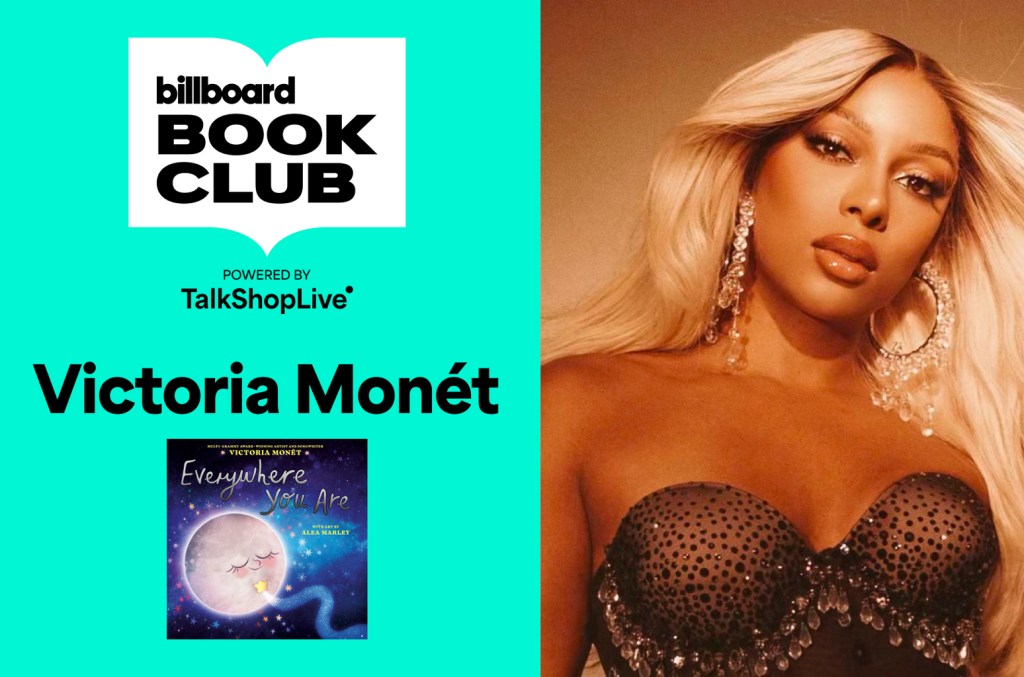
All products and services featured are independently chosen by editors. However, Billboard may receive a commission on orders placed through its retail links, and the retailer may receive certain auditable data for accounting purposes. After years as one of the music industry’s most respected singers and songwriters, Victoria Monét has now added another title to […]
The Doors’ story, strange days and otherwise, has been told many times to date — by writers, by filmmakers, by the band members themselves in their respective memoirs. But the new Night Divides The Day: The Doors Anthology book puts all of their accounts (and more) alongside each other for the first time ever.
Explore
Explore
See latest videos, charts and news
See latest videos, charts and news
The opulent, coffee-table sized 344-page book was created by England’s Genesis Publications, in partnership with the Doors camp, as part of the group’s 60th anniversary celebration. Featuring about 800 photos and other illustrations (many never before seen), the tome includes new interviews with surviving members Robby Krieger and John Densmore, along with material from the autobiographies and archival comments from Krieger, Densmore and late members Jim Morrison and Ray Manzarek. Nirvana’s Krist Novoselic wrote the foreword, while Van Morrison, Alice Cooper, Patti Smith and others join members of the Doors’ camp in offering commentary throughout the book.
Key events in the band’s history are recounted in depth — including the making of each album, the legendary Hollywood Bowl concert in July 1968 and the March 1, 1969, Dinner Key Auditorium show in Miami, after which Morrison was arrested for profanity and indecent exposure. And for gear aficionados, Night Divides The Day is awash in images of guitars, keyboards, drums and even Morrison’s microphones and harmonicas.
Trending on Billboard
“It really shows you a lot of the hidden Doors stuff that a lot of people don’t know about,” Krieger, who published Set the Night on Fire: Living, Dying, and Playing Guitar With the Doors in 2021, tells Billboard. “Just seeing the old pictures — a lot of pictures I’ve never seen, which is pretty cool. And reading a lot of interviews, stuff that I’ve forgotten all about…To go back in time and read the original stuff that you might have forgotten about or had the wrong idea of, it is nice to have everything in one (book) like this. I think it’s really done well.”
Krieger is also happy that in addition to the limited edition — 2,000 copies signed by the guitarist and Densmore, with a 7-inch vinyl single featuring rare demo versions of “Hello, I Love You” and “Moonlight Drive” and other memorabilia for $495 — there’s also a standard book store edition, which weighs in at $75.
“I think over the past sort of 10 years Genesis has been doing this more and more with selected titles,” the company’s Nick Roylance explains. “With the amount of work that goes into a book like this it’s nice to share it with a broader audience and…share their story more widely. It’s really lovely to do the limited edition that’s so special for those fans that can afford it; it’s a different experience of the book. But it’s genuinely meaningful to make it more widely available.”
The Doors
Genesis was introduced to the Doors’ world via A Guide to the Labyrinth: The Collected Works of Jim Morrison, featuring poetry, lyrics, essays and unpublished notes that the company published in May 2022. “We started there and got to know the archives and what we were working with photo-wise,” recalls Night Divides The Day editor Megan Lily Large. “So we had an idea of what we wanted with the design, and then it was just what (the Doors) wanted to tell with the text…We wanted to present their stories as authentically as we could, through their own words, through their own archives and give readers an insight they might not have been afforded until now.”
Lily Large considers the gear photos to be among the book’s holy grail content; some of the instruments had to be tracked down in private collections. And getting Van Morrison’s fresh remembrance of Jim Morrison joining him and his band Them during the last night of a 1966 stand at the Whisky A Go Go for “Gloria” and “The Midnight Hour,” filled with praise for Morrison’s performing chops, was a particularly rare get.
“I think he was quite excited to see the photos” from the performance by Whisky photographer George Rodriguez, Roylance says. Lily Large adds that, “We had these great photos of both of them, so we reached out to Van — ‘Have you seen these? We would love to get a couple of words from you, if we can, even a quote.’ And he came back with a full piece. My favorite part is when he describes Jim as ‘a brother from another mother.’ Which is quite a shock.”
Night Divides The Day is one of a number of projects for the Doors’ 60th celebration, which began last November with Rhino’s High Fidelity audiophile vinyl The Doors 1967-1971 and a Record Store Black Friday vinyl edition of The Doors — Live in Detroit. That show is also part of a series of concert releases from the Doors’ own Bright Midnight label from 1967-1970 streaming for the first time. The group acquired a recently discovered two-channel stereo recording of the final show with Jim Morrison — albeit a disappointing night on Dec. 12, 1970, at the Warehouse in New Orleans — that it’s working to turn into an official release.
“That’s gonna be coming out one of these days,” says Krieger, who was joined by Densmore on stage May 3 at during his monthly Doors album show at the Whisky. “We’re trying to get that together. We know there’s a tape that exists; that’s half the battle right there. I haven’t actually heard it, but I heard it’s pretty damn good, quality-wise.”
Krieger is staying busy with his own work as well these days. He’s planning a second album by the Soul Savages to follow up its 2024 debut, and he’s already recorded a rock-reggae album, featuring the late Phil Chen on bass, that he hopes to release this year. Krieger also guests on “Black Mamba,” the first single from The Revenge of Alice Cooper — a reunion of original band members who became tight with Krieger and the Doors during the late ‘60s in Los Angeles. “That was fun,” he says. “We would hang out together quite a bit back in the day. That (song) was right up my alley.”
Meanwhile, Krieger says he plans to keep enjoying the Doors anniversary celebration – and see what may transpire in the future.
“It’s amazing,” he says. “Even 20 years ago, the 40th anniversary, I was telling people I couldn’t imagine this happening. The only ones that have beaten us are the Stones and the Beatles, pretty much. There’s plenty of groups out there who were formed around the same time as we did, and they don’t have the (continuing) interest that we do. It’s definitely (because of) the songs, the words and the music. It was just an amazing combination of people, the four of us, who came together, and it probably happens once every 60 years. We don’t take it for granted.”
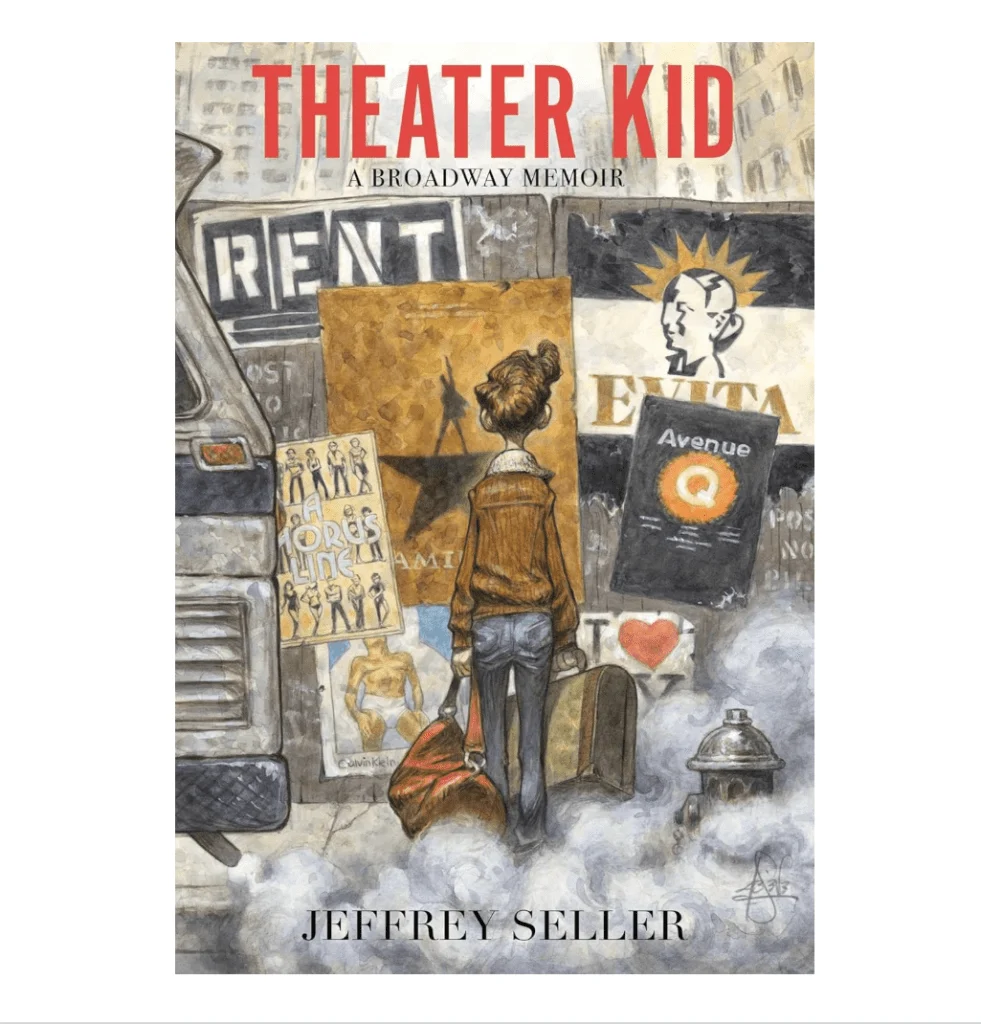
All products and services featured are independently chosen by editors. However, Billboard may receive a commission on orders placed through its retail links, and the retailer may receive certain auditable data for accounting purposes.
Acclaimed producer Jeffrey Seller has just released his memoir titled Theater Kid: A Broadway Memoir, sharing a look into his life pre and post Broadway fame. The novel is currently number one on Amazon’s Broadway Biographies list and on sale for $22. The memoir is also available as an audio CD, retailing for $29.24 and on Kindle for $14.99.
Explore
Explore
See latest videos, charts and news
See latest videos, charts and news
NEW RELEASE
Theater Kid: A Broadway Memoir
$22.33
$29.99
26% off
Seller is a well-known American theatrical producer who knows the industry inside and out. The producer’s resume speaks for itself, with three Best Musical Tony Award-winning Broadway shows under his belt for his work on productions like Rent, Avenue Q and In the Heights.
Released May 6, the new memoir is a coming-of-age tale that follows a young Seller before the accolades and star-studded career, at a time when he was juggling life living in a poor neighborhood just outside of Detroit.
The book touches on Seller’s sexuality, adoption and his longing to create in a world that didn’t foster creativity, and how he found his place — and belonging — in the Broadway community. From his youth, we are transported to Seller’s life spent as an office assistant, to meeting stars like Jonathan Larson and Lin-Manuel Miranda. The memoir also touches on finding new audiences, to creating amidst the HIV AIDS crisis. Seller also takes the audience along for a look into his whirlwind Tony Awards journey.
Ultimately, the novel offers readers a look behind the glitz and glam, offering Seller’s perspective on the creation of musicals, all while juggling his own reality and struggles. This read is for those curious, Broadway-loving folk who long for an insider’s perspective on the inner workings of Broadway’s most beloved musicals.
Though he’s best-known for his work on Rent, Seller also produced Hamilton in 2015 alongside Lin-Manuel Miranda, which he’d worked with previously on In the Heights. Seller also revolutionized theater accessibility with the creation of the $20 ticket lottery system he created for Rent, making theater available to anyone.

 State Champ Radio
State Champ Radio 
